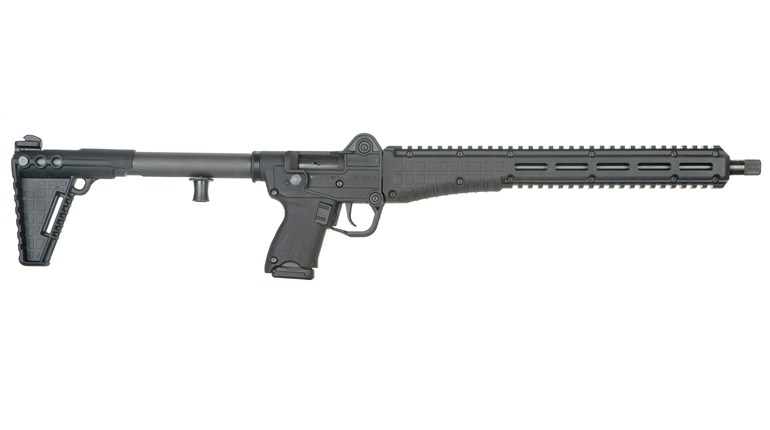
A critical reader once observed, “When Wiley’s not near the gun that he loves, he loves the gun he’s near.” It was a sardonic reference to my arguably undeserved enthusiasm about guns in general and handguns in particular. There’s probably more than a little truth in the guy’s observation. But I think there’s more yet in my delight that I have somehow blundered into the best job in the world: shooting all kinds of handguns and then writing about my experiences and impressions. So, here are some observations on the famed C96 Mauser pistol.
In this regard, I have come to understand that the appearance of a handgun is a major factor in public acceptance of that gun. People buy pistols and revolvers—at least in part—because they like the style of the gun. But what happens when the style of the gun has yet to be established? In the early 1890s, there were a few semi-automatic pistols like the C96 Mauser pistol making their way into the marketplace. The early semi-automatics were sometimes called “self-loaders” in that when you fired a shot, the gun automatically reloaded its own chamber. Much of the development effort of self-loaders was in Europe, where the arms industry was hard at arming up for the new century.
The earliest guns to be produced in significant numbers were the Borchardt, Mauser, Luger, Bergmann and Schwarzlose. The latter two, as well as a number of unmentioned others, were functioning handguns that history rather quickly consigned to footnote status. The toggle-action Borchardt had an awkward receiver extension that came back to a point even with the shooter’s lower forearm. I have fired one and it worked well, but was too large to carry and manage. It evolved into the Luger pistol that enjoyed a long service life and was built by seven different makers. Unlike most of their contemporaries, these two semi-automatic pistols were the first to put the ammo supply in metal magazines that detached from the gun. Each magazine held the ammo in a column with a spring-powered follower that drove the cartridges up for feeding in the pistol’s mechanism. Also, both housed the magazine in the otherwise wasted space located in the butt of the pistol. Most of the other aforementioned pistols put the ammo supply in the lower front corner of the receiver. The C96 Mauser pistol is our point-of-interest in this column and that was how it worked.
And it did work. Of all the early self-loaders, the C96 Mauser pistol lasted the longest in active service. German soldiers were issued this pistol as late as World War II. The gun was beautifully machined and finished, and used an early form of short-recoil operation. Both accurate and reliable, the big pistol was also chosen by other nations. Although it worked well, it was not the easiest pistol to shoot. Most of the reason for this is the grip shape, which put the shooter’s hand well below and behind the greatest mass of the gun. With the hand so far away from the bore axis, there was a sharp muzzle rise. Shooters who took the time to learn the gun were able to get excellent accuracy and surprising range out of the Mauser C96. The operator’s end of the pistol was a grip with a rounded butt that resembled a household broom. Therein came the nickname that persists to this day: the “Broomhandle” Mauser.
The C96 Mauser came along at a time when some European cavalry units actually wore metal breastplates, so penetration was one of the strong prerequisites for a military sidearm. The C96 fired a wicked pistol cartridge that propelled an 87-grain .30 caliber-bullet to 1,400 fps. That kind of performance will give you a great deal of penetration. But over the long (1896-1937) service life of the pistol, it was also chambered for the 9 mm—a World War I expedient measure—and an almost forgotten number called the 9 mm Mauser Export. This cartridge is quite close to the 9x23 mm Win. of just a few years back. Mauser’s C96 was copied in Spain by Astra, where engineers actually developed a trigger system that slowed down the cyclic rate of the full-automatic version of the pistol. But some of the more intriguing copies of the handgun came from China, which ended up being the C96’s single-best foreign market. More than a million guns were made in the German plant and many were exported to China. Eventually, the Chinese copied it and even cranked out a somewhat larger version chambered for .45 ACP.
There were a number of variations of the C96 Mauser, many of them made for export. Other than the rare 9 mm Export model, the Schnellfeuer is most intriguing. This was a selective-fire version of the basic pistol that seemed like a good idea to someone. For this model, the plant came up with a detachable 20-round magazine. But the fact remains, the C96 Mauser was ill-balanced, awkward, slow to reload and uncommonly ugly. Nonetheless, it was accurate, reliable and effective. So, who used this old warhorse?
A slim, slight subaltern of the 4th Hussars in Lord Kitchener’s forces in the Sudan. It was Sept. 2, 1898, and the war was about to be decided at Omdurman. The young officer, with the 21st Lancers, got into one of the dramatic cavalry charges that often crop up in British military history. Like so many of his kind, he’d privately purchased a new handgun. At the course of the fight, he put away his Wilkinson sword and drew a C96 Mauser. We can conclude Winston Churchill knew something about fightin’ iron.



































